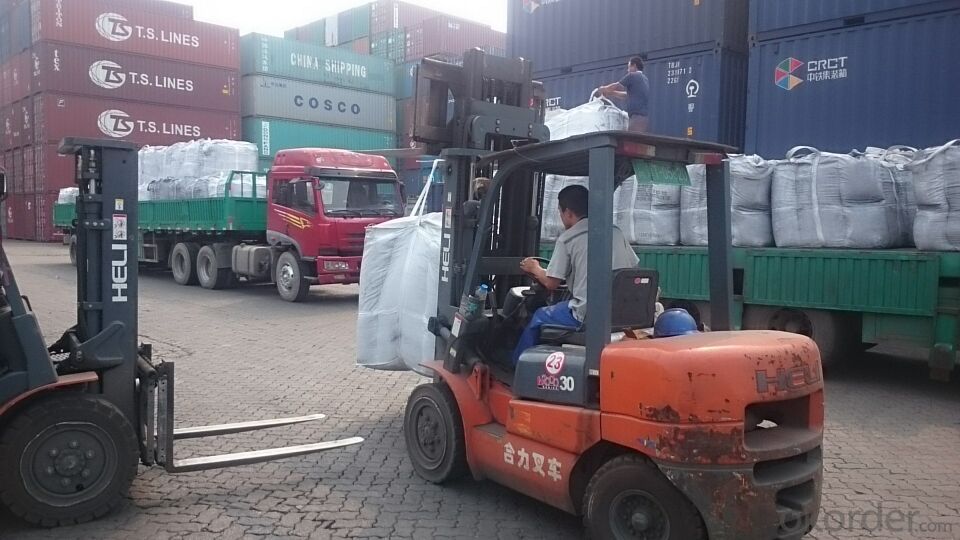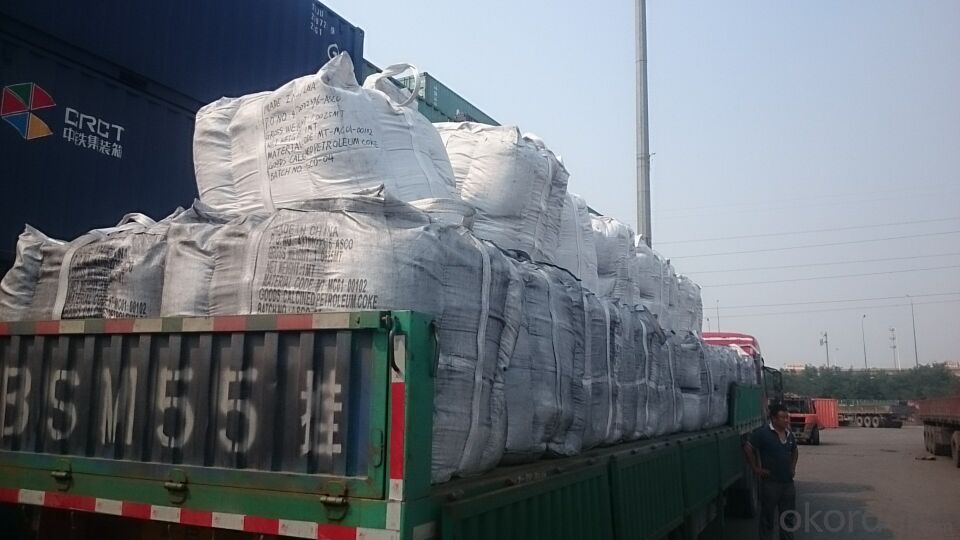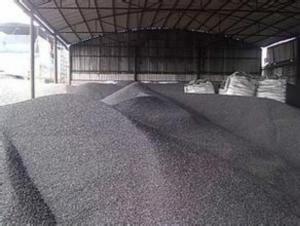GPC with lower Sulphur0.03% max in Low VM
- Loading Port:
- Tianjin
- Payment Terms:
- TT OR LC
- Min Order Qty:
- 21 m.t.
- Supply Capability:
- 5000 m.t./month
OKorder Service Pledge
OKorder Financial Service
You Might Also Like
Introduction:
GPC has good characteristics with low ash, low resistivity, low sulphur, high carbon and high density. It is the best material for high quality carbon products. It is used as carbon additive in steel industry or fuel. it is playing more and more important role in the industry
Features:
1.Our strong team provide you reliable service that make you feel purchasing is more easier
2. We ensure that we can supply capability with competitive price.
3. Work strictly to guarantee product quality,
Specifications:
F.C.% | 95MIN | 94MIN | 93MIN | 92MIN | 90MIN | 85MIN | 84MIN |
ASH % | 4MAX | 5MAX | 6 MAX | 6.5MAX | 8.5MAX | 12MAX | 13MAX |
V.M.% | 1 MAX | 1MAX | 1.0MAX | 1.5MAX | 1.5MAX | 3 MAX | 3 MAX |
SULFUR % | 0.3MAX | 0.3MAX | 0.3MAX | 0.35MAX | 0.35MAX | 0.5MAX | 0.5MAX |
MOISTURE % | 0.5MAX | 0.5MAX | 0.5MAX | 0.5MAX | 0.5MAX | 1MAX | 1MAX |
Pictures



FAQ:
1. Your specification is not very suitable for us.
Please offer us specific indicators by TM or email. We will give you feedback as soon as possible.
2. When can I get the price?
We usually quote within 24 hours after getting your detailed requirements, like size, quantity etc. .
If it is an urgent order, you can call us directly.
3. Do you provide samples?
Yes, samples are available for you to check our quality.
Samples delivery time will be about 3-10 days.
4. What about the lead time for mass product?
The lead time is based on the quantity, about 7-15 days. For graphite product, apply Dual-use items license need about 15-20 working days.
5. What is your terms of delivery?
We accept FOB, CFR, CIF, EXW, etc. You can choose the most convenient way for you. Besides that,
we can also shipping by Air and Express.
6. Product packaging?
We are packed in bulk ship or in ton bag or placing in container or according to your requirements.
7. Notice
please note that the price on Alibaba is a rough price. The actual price will depends on raw materials, exchange rate wage and your order quantity .Hope to cooperation with you, thanks !
- Q:What's the difference between an alkaline cell and a carbon cell?
- Carbon batteries and alkaline batteries are dry cells, but only in accordance with the quality of different materials and divided into two categories:2. The battery should be full carbon carbon zinc batteries (because it is the general level is the carbon rod electrode is the zinc skin), also known as zinc manganese battery, is currently the most common dry battery, it has the characteristics of low price and safe and reliable use, based on the consideration of environmental factors, because the ingredients still contain cadmium. It must be recovered, so as to avoid damage to the environment of the earth. (so we usually use the carbon rod, the negative electrode is zinc skin, the battery should be recycled)
- Q:How is carbon used in the production of rubber?
- Carbon is widely used in the production of rubber due to its unique properties and its ability to enhance the overall quality and performance of rubber products. Carbon black, a form of elemental carbon produced by the incomplete combustion of hydrocarbons, is a key component in rubber manufacturing. Carbon black is added to rubber formulations to improve its strength, durability, and resistance to wear and tear. It acts as a reinforcing agent, providing increased tensile strength and abrasion resistance to the rubber. Carbon black particles interlock with the rubber polymer chains, reinforcing the overall structure of the material and making it more resilient. Additionally, carbon black helps improve the conductivity of rubber, making it useful in applications where electrical conductivity is required. It also enhances the UV resistance of rubber, protecting it from degradation caused by sunlight exposure. Carbon black can also improve the coloration and appearance of rubber products, giving them a deep black color. Furthermore, carbon black can be used as a filler in rubber compounds, reducing the overall cost of production while maintaining or even improving the mechanical properties of the rubber. By replacing a portion of the more expensive rubber polymer with carbon black, manufacturers can achieve cost savings without sacrificing the desired performance characteristics of the rubber. Overall, carbon plays a crucial role in the production of rubber by enhancing its strength, durability, conductivity, UV resistance, and appearance. Without carbon, rubber products would not possess the desired properties necessary for their intended applications.
- Q:What is carbon fixation in biology?
- Carbon fixation in biology refers to the process by which carbon dioxide (CO2) from the atmosphere is converted into organic compounds by living organisms. It is a crucial step in the global carbon cycle and is primarily carried out by autotrophic organisms, such as plants, algae, and certain bacteria. During carbon fixation, the enzyme RuBisCO (ribulose-1,5-bisphosphate carboxylase/oxygenase) catalyzes the reaction between CO2 and a five-carbon sugar molecule called ribulose bisphosphate (RuBP). This reaction produces two molecules of a three-carbon compound called 3-phosphoglycerate (3-PGA). This initial step is known as the Calvin cycle or C3 photosynthesis. In plants, the 3-PGA molecules are then converted into other organic compounds, such as sugars, starches, and cellulose, through a series of enzymatic reactions. These organic compounds serve as building blocks for the plant's growth and development. Carbon fixation plays a critical role in maintaining a balance of atmospheric CO2 levels and is a key process in regulating climate change. It allows for the transfer of carbon from the atmosphere into the biosphere, ultimately reducing the concentration of greenhouse gases and mitigating the effects of global warming. Moreover, carbon fixation is essential for sustaining life on Earth as it provides the basis for food chains and supports the growth of other organisms. Heterotrophs, including animals and humans, depend on the organic compounds produced by autotrophs through carbon fixation for their energy and nutritional needs. Overall, carbon fixation is a fundamental process in biology that enables the conversion of atmospheric carbon dioxide into organic compounds, sustaining life and helping to regulate the Earth's climate.
- Q:What are the industrial uses of diamonds?
- Diamonds have a wide range of industrial uses due to their exceptional physical properties. One of the most common industrial uses of diamonds is in the manufacturing of cutting and grinding tools. Diamond-tipped saw blades, drill bits, and grinding wheels are highly sought after for their superior hardness and abrasion resistance. These tools are used to cut and shape hard materials like concrete, ceramics, and metals. Diamonds also find extensive applications in the electronics industry. They are used as heat sinks in high-power electronic devices and as abrasive materials for polishing and lapping electronic components. The thermal conductivity of diamonds allows them to efficiently dissipate heat, making them ideal for electronic devices that generate a lot of heat during operation. Furthermore, diamonds are used in the production of specialized windows, lenses, and prisms for various scientific and industrial applications. Their optical properties, such as high refractive index and low dispersion, make them valuable for creating precision optics used in lasers, spectroscopy, and telecommunications. In addition, diamonds have found niche uses in the medical and dental fields. They are used in surgical tools such as scalpels and dental drills due to their exceptional hardness and ability to retain sharp edges. Diamond coatings are also applied to medical implants and prosthetics to improve their wear resistance and biocompatibility. Lastly, diamonds are utilized in the oil and gas industry for drilling and exploration purposes. Diamond drill bits are capable of penetrating extremely hard rock formations, making them essential for extracting oil and natural gas from deep beneath the Earth's surface. Overall, the industrial uses of diamonds are vast and diverse, ranging from cutting and grinding tools to electronics, optics, medicine, and even oil and gas exploration. The unique properties of diamonds make them indispensable in numerous industrial applications, contributing to advancements in various fields.
- Q:What is the relationship between carbon and climate change?
- The relationship between carbon and climate change is that carbon dioxide (CO2), primarily emitted through human activities such as burning fossil fuels, is a greenhouse gas that contributes to the warming of the Earth's atmosphere. The excessive release of CO2 traps heat, leading to a rise in global temperatures and subsequent climate change impacts such as melting ice caps, rising sea levels, extreme weather events, and disruptions to ecosystems.
- Q:What is carbon steel, carbon manganese steel?
- Carbon steel: carbon content less than 1.35%, excluding iron, carbon and limited within the limits of silicon, manganese, phosphorus, sulfur and other impurities, excluding other alloy elements of steel. The performance of carbon steel depends mainly on carbon content. With the increase of carbon content, the strength and hardness of the steel increases, and the plasticity, toughness and weldability decrease.
- Q:What is the carbon content of different types of household waste?
- The carbon content of various household waste types can differ based on the specific materials being disposed of. Generally, organic waste, including food scraps, yard waste, and paper products, tends to have higher carbon content when compared to inorganic waste like glass, plastics, and metals. Food waste consists mainly of organic materials and possesses a significant carbon content, typically ranging from 50 to 70 percent. This is because food originates from plants and animals, which contain carbon-rich carbohydrates, proteins, and fats. Yard waste, such as grass clippings, leaves, and branches, also contains a substantial amount of carbon. It is composed of plant matter predominantly made up of carbon-based compounds like cellulose and lignin. The carbon content of yard waste can vary depending on the vegetation type, but it generally falls between 40 to 60 percent. Paper products, such as newspapers, cardboard, and office paper, are primarily manufactured from wood pulp. Wood consists of carbon-containing compounds like cellulose, hemicellulose, and lignin. Consequently, paper waste possesses a notable carbon content, typically ranging from 40 to 60 percent. On the other hand, inorganic waste materials like glass, plastics, and metals have minimal carbon content. These materials are mainly derived from non-renewable resources such as minerals and fossil fuels, which have low carbon content. As a result, their carbon content is negligible or close to zero. It is crucial to acknowledge that while organic waste contains higher carbon content, it also holds the potential for composting or conversion into biogas through anaerobic digestion, thereby contributing to carbon sequestration or renewable energy generation. In contrast, inorganic waste materials like plastics and metals are non-biodegradable and can have harmful environmental consequences if not managed properly.
- Q:Well, recently, the carbon cycle has suddenly come up with a lot of questions. What's the definition of carbon and light carbon? What are the characteristics, and what are the differences between the two?
- Light and heavy soil organic matter is divided according to the proportion of the isolates used in this study. The proportion of 1.7 is the proportion of < 1.7 for light fraction organic matter, the proportion of > 1.7 recombinant organic matter. The composition and decomposition of organic carbon in different components are significantly different. Light fraction organic matter by no solution complete plant residues and its fractions include a small amount of live microorganisms or their secretions, is susceptible to microbial decomposition and utilization characteristics, is very sensitive to climatic and environmental changes and agricultural management measures, is the active carbon pool in soil.
- Q:How does carbon impact air quality?
- Carbon impacts air quality through the release of carbon dioxide (CO2) and other greenhouse gases during the combustion of fossil fuels. These emissions contribute to the greenhouse effect, trapping heat in the atmosphere and causing global warming. Additionally, carbon particles from incomplete combustion, like soot, can reduce air quality by causing respiratory issues and forming smog.
- Q:What are the basic structures of iron carbon alloys?
- Pearlite: a mixture of ferrite and cementite, expressed in P. Microscopically, the cementite and the ferrite lamellae alternate with each other. Under equilibrium conditions, the carbon content of pearlite is 0.77%, and its strength is high. The plasticity, toughness and hardness of pearlite are between cementite and ferrite.A mixture of austenite and cementite at high temperatures, expressed in Le. Its mechanical properties are similar to those of cementite, with high hardness and poor plasticity.Ferrite, austenite and cementite are the basic phases of iron carbon alloy in the five kinds of structures.
1. Manufacturer Overview |
|
|---|---|
| Location | |
| Year Established | |
| Annual Output Value | |
| Main Markets | |
| Company Certifications | |
2. Manufacturer Certificates |
|
|---|---|
| a) Certification Name | |
| Range | |
| Reference | |
| Validity Period | |
3. Manufacturer Capability |
|
|---|---|
| a)Trade Capacity | |
| Nearest Port | |
| Export Percentage | |
| No.of Employees in Trade Department | |
| Language Spoken: | |
| b)Factory Information | |
| Factory Size: | |
| No. of Production Lines | |
| Contract Manufacturing | |
| Product Price Range | |
Send your message to us
GPC with lower Sulphur0.03% max in Low VM
- Loading Port:
- Tianjin
- Payment Terms:
- TT OR LC
- Min Order Qty:
- 21 m.t.
- Supply Capability:
- 5000 m.t./month
OKorder Service Pledge
OKorder Financial Service
Similar products
New products
Hot products



























